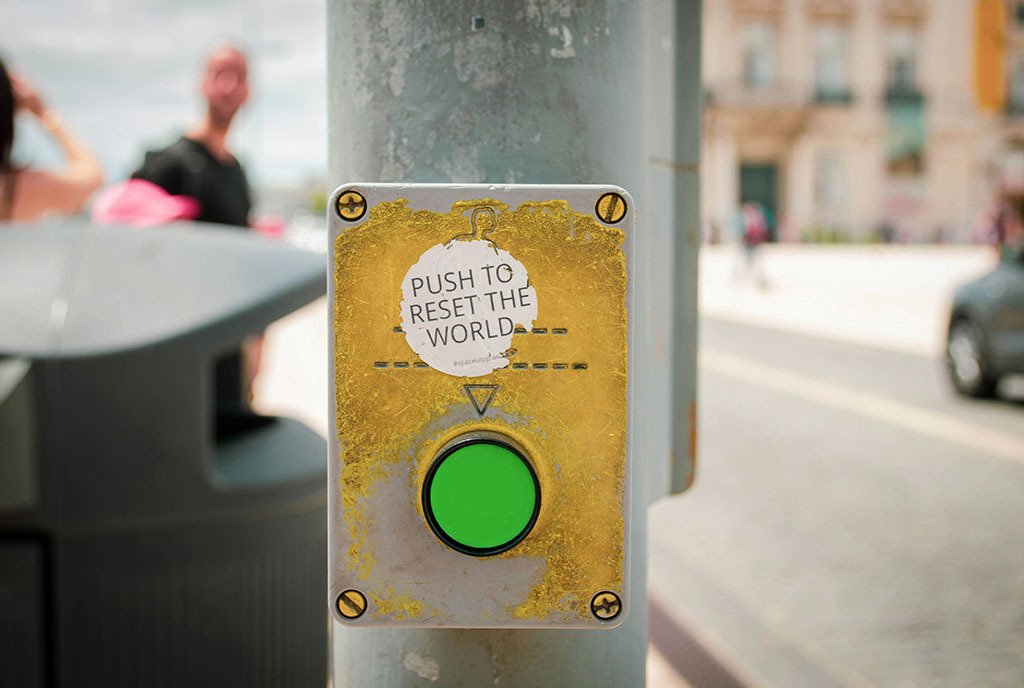
It was a cold May when I had the thought: what if spring never came back?
What they say about Ohio, my home state, is that if you don’t like the weather, wait five minutes. But this felt different. Unrelenting. I felt the snow, which kept coming and coming, so keenly because my son was young, only just in elementary school. His school kept closing for an inch—or even the hint of an inch—of snow, leaving me with no childcare and no way to work.
So, I paid attention to the weather and how it was different. Off.
I also paid attention because farming was how my family made a living on both my father’s and mother’s sides. Our lives were ordered by the seasons, growing strawberries in the summer and Christmas trees in the winter. Fall meant mushrooms, foraging that continued in the spring. But that spring, as I watched the windows freeze over from the inside, I started to write a book.
I never set out to write climate fiction, or “cli-fi,” at all—to be honest, I didn’t know that was an actual genre. I wrote a story, one that could come true. I wrote fiction, although not far off from real life. And though I can’t remember the first time a reviewer or scholar attached the label cli-fi to my work, it’s the only one that feels right.
The definition of climate fiction is fiction that deals with a changing climate, creative writing concerned with climate change—and all the stories, chaos, humanity, sorrow, and hope for action that encompasses. As the Atlantic describes it, “the genre, in short, explores the potential, drastic consequences of climate change.”
Expectations Placed on Writers
In the book I wrote that spring, Road Out of Winter, a young woman who has grown up on her family’s farm in rural Appalachian Ohio must decide to leave the only home she’s ever known after spring never arrives. After two years—and counting—of a world of winter. This aligns with the Atlantic’s argument that in cli-fi, “the pivotal themes are all about Earth, examining the impact” of human-caused changes to the climate.
After the book was published, I found myself in the unusual position of both being asked to make impassioned speeches about taking care of the Earth and trying to explain the science and the technology behind possible climate change solutions. In other words, I was being asked to make it better. To fix it, as a fiction writer.
If you write cli-fi, this may happen to you. People will ask you for help. People will ask you what to do, ask you if you really believe we will end up in a world filled mostly with plastic, as in my second novel, Trashlands. A world where children are named after plants, animals, and places lost to climate change, like Miami, Shanghai, Coral, and Summer.
Do you really think it will be that bad? I was asked.
Yes, I answered. And worse.
The Influence of Climate Fiction
The truth of it is that climate fiction is still fiction, and fiction is invented. Fiction is the stuff of imagination and of emotions: deepest wants and darkest fears. Fiction is made of life sometimes, but certainly not all the time. In many regards, everything I write is an escape, and that is true of climate fiction as well.
All the possibilities of a world exist within you when you write fiction.
Sign up for our free newsletters
Subscribe to NPQ's newsletters to have our top stories delivered directly to your inbox.
By signing up, you agree to our privacy policy and terms of use, and to receive messages from NPQ and our partners.
Because my first novel wasn’t an escape from climate change, but it was a break from politics and my life as a single mother stuck in one place. I wrote about a younger woman who moved, left her home and had the strength to bring along and care for others in the process. As the winter that wouldn’t end in real life eventually moved on into a slow spring and heavy, humid Appalachian summer, I wrote about the cold. Cold was an escape.
It’s all right to have that escape.
Perhaps your escape is indeed a post-apocalyptic novel because that’s not our present apocalypse; it’s a different apocalypse. In fiction, I’m not writing about a pandemic that won’t end. I’m not writing about the gun violence that those in power refuse to try to stem. I’m writing about snow that won’t stop. The feelings are the same in both: helplessness, confusion, denial, and sorrow about the life that was lost, the fear about an uncertain future, the fear for my child. But the specifics are different in life and in art.
One of my greatest secrets about fiction writing is emotional transference. The stories aren’t “true.” The characters aren’t from life. But their emotions, all of their many, messy feelings? Those are all mine. I claim them. Your self-care can be a dystopian story. Because it is yours.
Writing climate fiction can be a form of care for the Earth and for yourself.
At the moment, I live in Colorado, where our backyard is a square of dirt, dry and fallow. When the wind blows, it blows dust; I can’t sweep it all up. I entered my old home address in Ohio on a climate predictor website, and the risk for flooding there is 10 out of 10. Extreme. I can’t control any of that. I can’t save my home or make my present home much better.
What I can control is that all the main characters in a fictional story make it, and they make a world for themselves. All the possibilities of a world exist within you when you write fiction.
I can’t control if people consume less or recycle or if the things we recycle are actually recycled. I can’t make factories stop polluting or producing single-use plastics. But what happens to the worlds I make—I, as an individual writer, have a lot of power over that. And in that regard, writing climate fiction can be a form of care for the Earth and for yourself. You are removing yourself from the world, which is unbearably and relentlessly hard. You are disappearing into a new world where you can be safe because you make the rules there.
It’s possible art can do the unthinkable, reach the unreachable.
Yes, you can make your characters suffer—and writers have to, at least a little, because fiction is all about making trouble and creating conflict—but you can also help characters figure it out. You can have your governments listen—if you even have politicians at all in your cli-fi stories. You can have your world run by women or children or people of color or disabled people.
And you can influence the real world. Journalists and reviewers have often asked me to speak about the plastic crisis perhaps because they took something from my climate fiction about it. They believed my story that said it’s urgent. Are those people who would also believe news reports or science on the same subject? I hope so. But it’s possible art can do the unthinkable, reach the unreachable.
All art has the power to make change, and cli-fi may have the most power of all. Climate fiction can find a way in.











